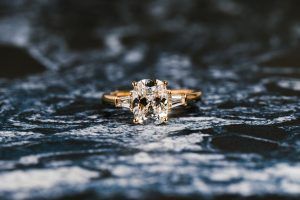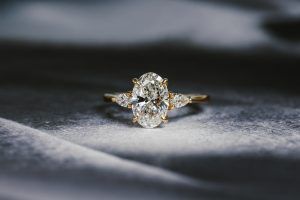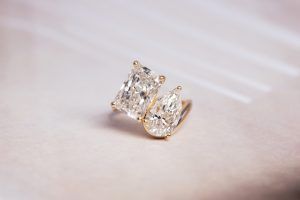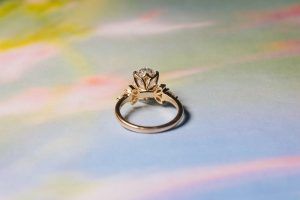
written by Mo
Top Tips for Picking the Perfect Oval Diamond
Hi there. We hear you are considering an oval diamond, how exciting!
Did you know that there are a lot more variations in oval diamonds than people realize?
We are going to help you on your oval diamond discovery journey by walking you through some of the variations that are available, we are also going to give you a couple of tips on some things you will want to look out for to ensure that you get the most beautiful oval diamond possible!
It goes without saying that oval diamonds are the hottest trending shape right now…you wandering onto this post is evidence of that.

When aligned with the finger, an oval shape has an attractive lengthening effect. Also, the size you can get in an oval diamond in comparison to a round diamond is something you can’t really beat — since the oval diamond has a larger surface, it will actually appear bigger than a round.
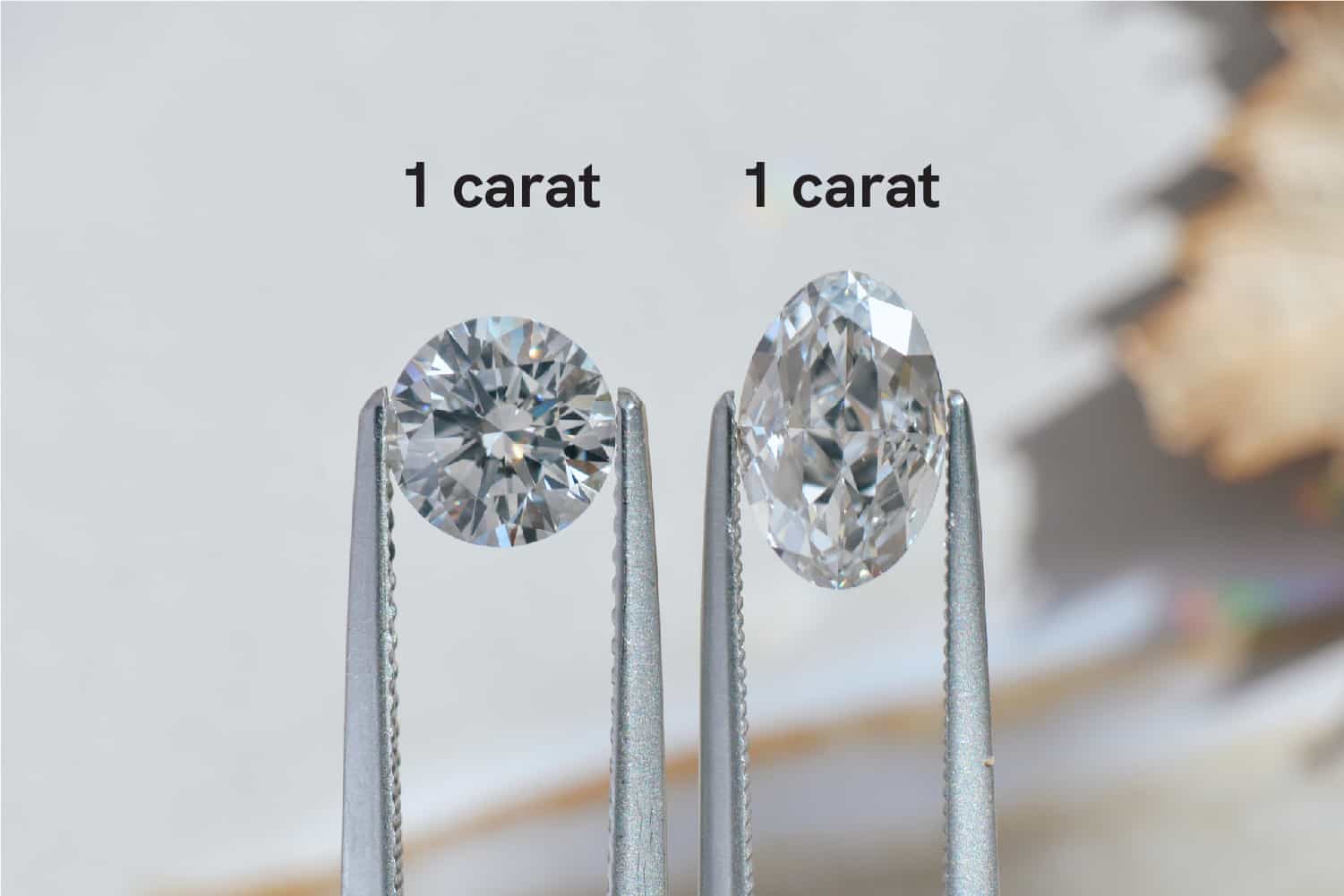
They are a modern-day twist on your classic round diamond.
There are four oval variations that we are going to cover. Two of the variations are going to be more of quality issues and the other two are going to be more of preference options.
In terms of variation, the first thing we are going to talk about is the “bowtie effect”, then we are going to cover the length to width ratio and explain what that is. After that, we are going to cover the different options that are available in terms of how oval diamonds shine.
The (In)Famous Bowtie
First off, one of the common things that you are going to come across when you are looking at oval diamonds is this thing called a “bow-tie effect”.
A bow tie effect is more of a gradient…a spectrum, if you will.
It is not black and white, in the sense that it is not a question of “does a diamond have it or not”. Some stones are going to have more of an obvious bow tie, some of them less so, some of them almost none. Usually, the presence of a bow-tie effect is seen as more of a negative thing for most people.

Before we get carried away, let’s get into what the bow-tie effect actually is.
What causes the bowtie is the fact that oval diamonds are not circular in geometry. In oval cuts, a bowtie shape forms across the middle of the stone on the inside and is reflected on the surface. It creates a different pattern in the way it is faceted and as a result, the light ends up reflecting through it in a different way than it would with a round stone. This reflection can cause dark zones in the stone itself, which exhibit as that bow tie pattern.
It’s not the same all the way around, some are only noticeable from certain angles.
More than Meets the “I”
The second thing you are definitely going to want to look out for when you are choosing your oval is the colour – you are going to want to make sure there isn’t too much yellow in the stone. Oval cut diamonds tend to be less forgiving on color than a round brilliant.

Let’s look at these two diamonds. They are both “I” in color, for example. In an I colour round diamond that is well cut, the majority of the population won’t really be able to see that yellowish tinge.
The oval, however, in an I color just tends to show the color more. The result is that a lot more people are able to notice the yellowish tinge in it.
For this reason, we usually recommend staying with an “H” in colour as a minimum. And then from there it is more about personal preference, sensing what threshold you no longer see the bowtie in and what your color preferences are.
The Golden Ratio
Thirdly, one of the other preferences that is available in choosing your oval is what’s referred to as the length to width ratio — in other words, how elongated you want your oval to be. All it is, is taking your length and dividing it by the width, that number is going to be your length to width ratio. This formula is for all the people out there that love numbers!!

It is important to note here that there is no perfect ratio, I have to break it to you. So what you really want to focus on is comparing different ovals on your hand, they are all going to have various length to width ratios—you will have ones that are taller, and more slender & you will have ones that are shorter and more plump. At the end of the day, you will want to make note of which spread you really like the look of and how you like it on your finger.

The Multi-Faceted One
Moving on to our fourth and final variation — faceting! Oval diamonds are not faceted all the same. In simpler terms, what that means is that while round diamonds are the most standardized shape in terms of the way that they are faceted, ninety-nine percent are cut the same way — they have 57 facets, ovals on the other hand, are not standardized. You might have one that has 25 facets and another with 56. This is because there’s no prescribed way that an oval diamond is cut. What this means is that each oval will shine in different ways.
At the end of the day, there is no perfect way to cut an oval diamond or one specific way an oval should look. You have to find your sparkle.
So the takeaways we want to leave you with are:
#1
When it comes to quality, look for a diamond that has no bow tie or as little as possible.
#2
With regard to color, stick with a minimum H.
#3
It is super important to see different diamonds side by side so you can compare ovals in varying length to width ratios, to figure out what kind of ratio you are comfortable with.
#4
Just as importantly, compare your options loose, ideally options that are faceted in different ways so you can see how they shine and figure out what it is that you like best.
The amazing thing about choosing an oval is that much like Cinderella, when you find your fit, you will have a diamond as unique and beautiful as you are!




